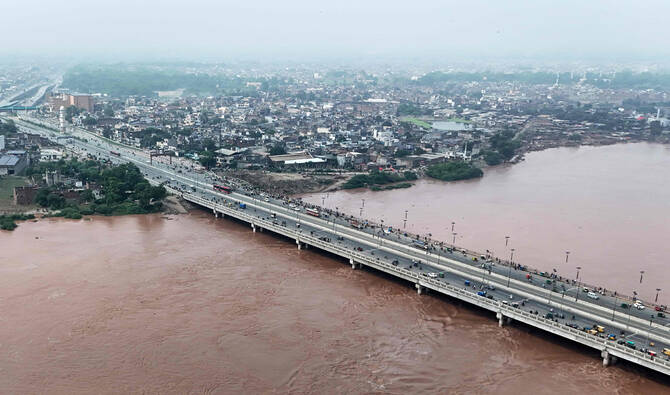ISLAMABAD: PakistanŌĆÖs Power Minister Sardar Awais Leghari on Friday warned that the use of solar net-metering facility could add an extra burden of Rs3-4 per unit on consumers, if allowed to continue unchanged.
Solar net-metering is a policy that allows homeowners and businesses to generate power using solar panels and export excess energy to the national grid. In Pakistan, it is a billing system through which consumers receive credits or monetary compensation for the surplus power they sell to the grid.
Approved in 2017 to promote solar energy, PakistanŌĆÖs net-metering policy pays Rs21 per unit for surplus solar power, including a Rs1.90 subsidy. In April last year, the energy ministry said the subsidy burden falls on the government and other consumers to benefit affluent households with solar panels.
Around 0.6 percent of total electricity consumers in Pakistan are net-metering users out of which 80 percent belonged to affluent areas of major cities while the remaining 99.4 percent of electricity consumers bear the burden of the net-metering costs, the energy ministry said in January this year.
ŌĆ£As for the matter of net metering, if it is allowed to continue in the same manner, then 200,000 to 300,000 people will benefit from it while placing an additional burden of Rs3-4 on the entire nation,ŌĆØ Leghari said at a press conference in Lahore.
Around 18 million consumers are already receiving electricity at a 70 percent discount, which was up from nearly six million consumers in recent years, according to the minister. Prime Minister Shehbaz Sharif has directed further cuts in electricity prices and officials at the energy ministry are ŌĆ£exploring different optionsŌĆØ to achieve this.
Leghari had called for revising PakistanŌĆÖs existing net-metering system in January this year, saying that it was becoming unfeasible for the government.
ŌĆ£Solar net-metering has to change,ŌĆØ Leghari said while addressing a conference in Islamabad. ŌĆ£It is impossible for us to sustain the same cost of buying power from distributors the way we are.ŌĆØ
Pakistan has ideal climatic conditions for solar power generation, with most parts of the country receiving over nine hours of sunlight daily. According to the World Bank, utilizing just 0.071 percent of the countryŌĆÖs land area for solar photovoltaic (solar PV) power generation could meet PakistanŌĆÖs electricity demand.
The South Asian country, home to 241 million people, aims to transition to 60 percent renewable energy by 2030 and reduce projected emissions by 50 percent. However, despite a recent surge in solar power adoption, it remains far behind in achieving this goal.




















